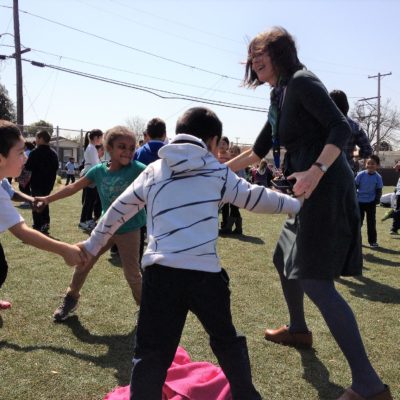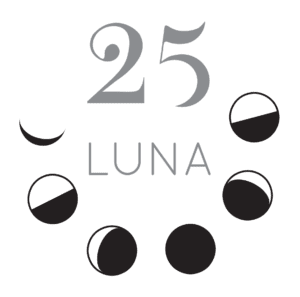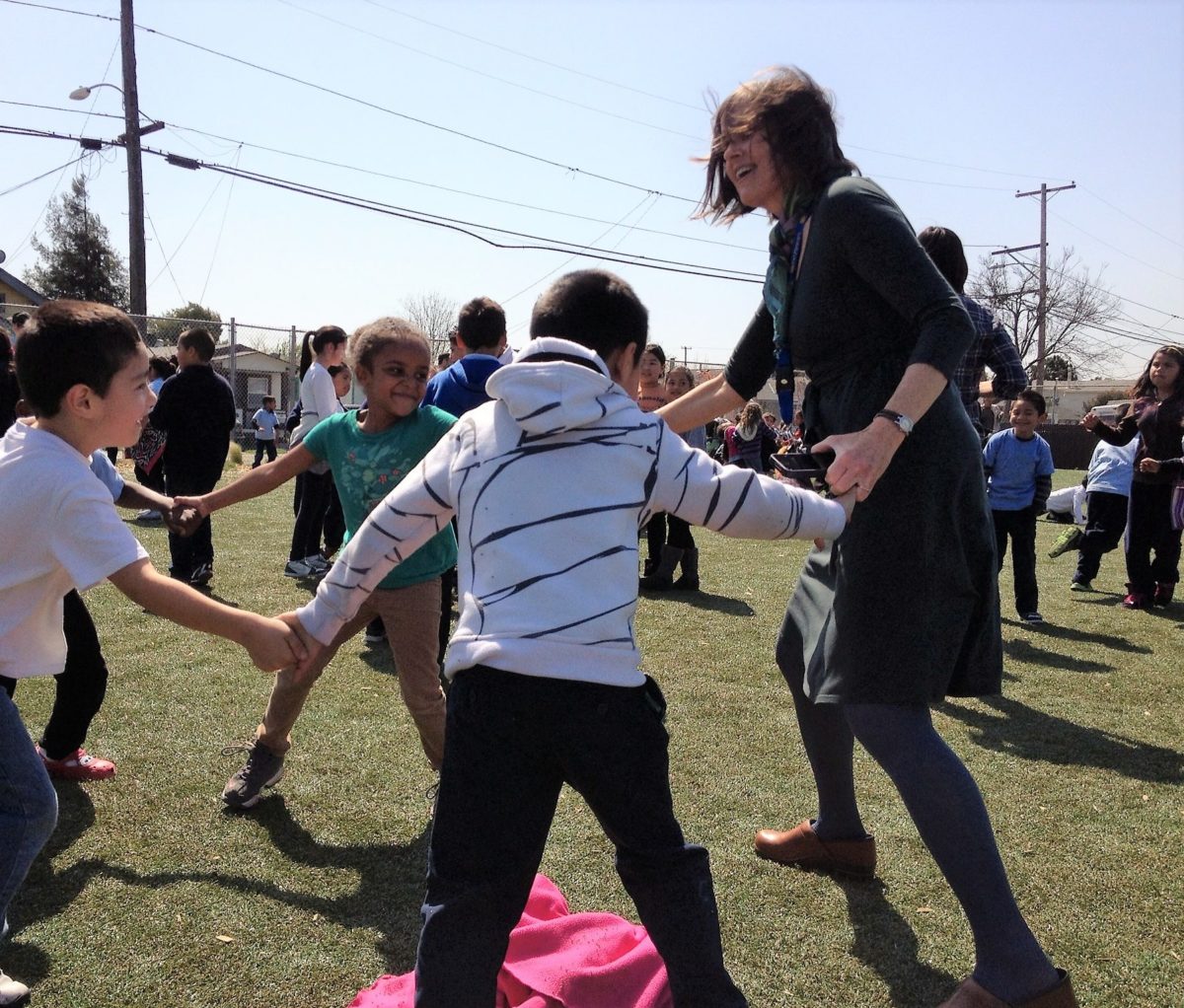Emily Blossom

Luna’s partnership with New Highland Academy began eleven years ago when we were invited to help build a comprehensive, standards-based dance program that would eventually bring weekly dance classes to each student in the school. One of the New Highland teachers we have been honored to work with is Emily Blossom. Initially a kindergarten educator, Emily currently teaches first grade. A singer and musician, Emily brings to her classroom a rich repertoire of song, and now, through her connection to Luna, incorporates creative movement. “At first, I was simply taking my students to dance class and not involved in the class. Over the years, I started collaborating more closely with my Luna partners in designing the dance experiences of my students. After many years of shorter professional development experiences with Luna dance, I found my way to the SI in 2015.” She dances the Brain Dance daily with her students, and uses the language of dance to enliven transitions between activities and classroom customs. Her continued interest in arts integrated learning has brought her back to Luna as a soft-facilitator on Dance as Arts Integration Practitioner Exchanges.
Responsible for teaching all subjects, Emily’s recent year-long inquiry looks at ways dance can support literacy, especially in her classroom where 70% of students are English Language Learners. She explored how students expand their writing and oral skills to describe their experience of dance, both as observers and as dancers, and how they can use writing to compose dances and plan ahead. Her research was supported by her own experience in the SI, and her interaction with other educators which broadened her understanding of the power of creative expression in helping people learn. “I have seen how movement gives a voice to students who otherwise might not have one – such as those who don’t yet speak English.”
Emily’s investigation included observation of her students, the creation of student dance journals in which they wrote regularly, and “Lunch Bunch” interviews during we she chatted with students while they watched videos of themselves dancing. Below is one such interview and her reflections:
Me: Can you describe what you’re talking about–tell us what they’re [your fellow students] doing.
L: He’s bowing and spreading his arms wide.
J: I think that was like a bird.
Me: Do you think that was what he wanted to do? Can you use any dance words?
J: Smoothing.
Jh: Loose.
I’m listening for how they describe their experience, and if they access the content vocabulary that they’ve been exposed to. I try to ask questions that are both open-ended and specific enough to get them talking.
E says, “She’s moving like a little slug, like a little caterpillar.” E’s an ELL, and she’s struggling to find the words, but she’s using her body to show the way an inchworm folds itself and then expands forward. The others supply some more ideas: “bursting,” “falling,” “twirling,” “balancing.” When they’re finished eating, we move to the classroom rug and I ask them to show me some of the moves they saw each other making in the video. They happily demonstrate for me, reenacting each other’s creative explorations.
I listen to this recording on my way home. I’m hearing the kids’ processing in a new way, when I have the luxury of not managing the class or thinking about the next step, but just listening to them. While their language is imprecise, they’re noticing details about each other’s dancing that I didn’t appreciate because I was so focused on whether or not they could use the specific vocabulary. I’ve kept these recordings of lunch conversations with my students on my phone for months now, because every time I listen to them, I hear something I hadn’t noticed before. I keep thinking about the value of teaching dance, and the ways that the arts can support a child’s emerging literacy. Rarely do teachers have the time or even the reason for “targeted listening” like this. What a gift!

In 25 years, Luna has worked with hundreds of teachers who we’re now proud to say are teaching all around the globe.
From Emily Blossom to Jakey Toor, our past Professional Learning colleagues are collectively and cumulatively teaching tens of thousands of children. We’re sharing their stories, about how they continue to positively impact the dance education field, the future, the world.

